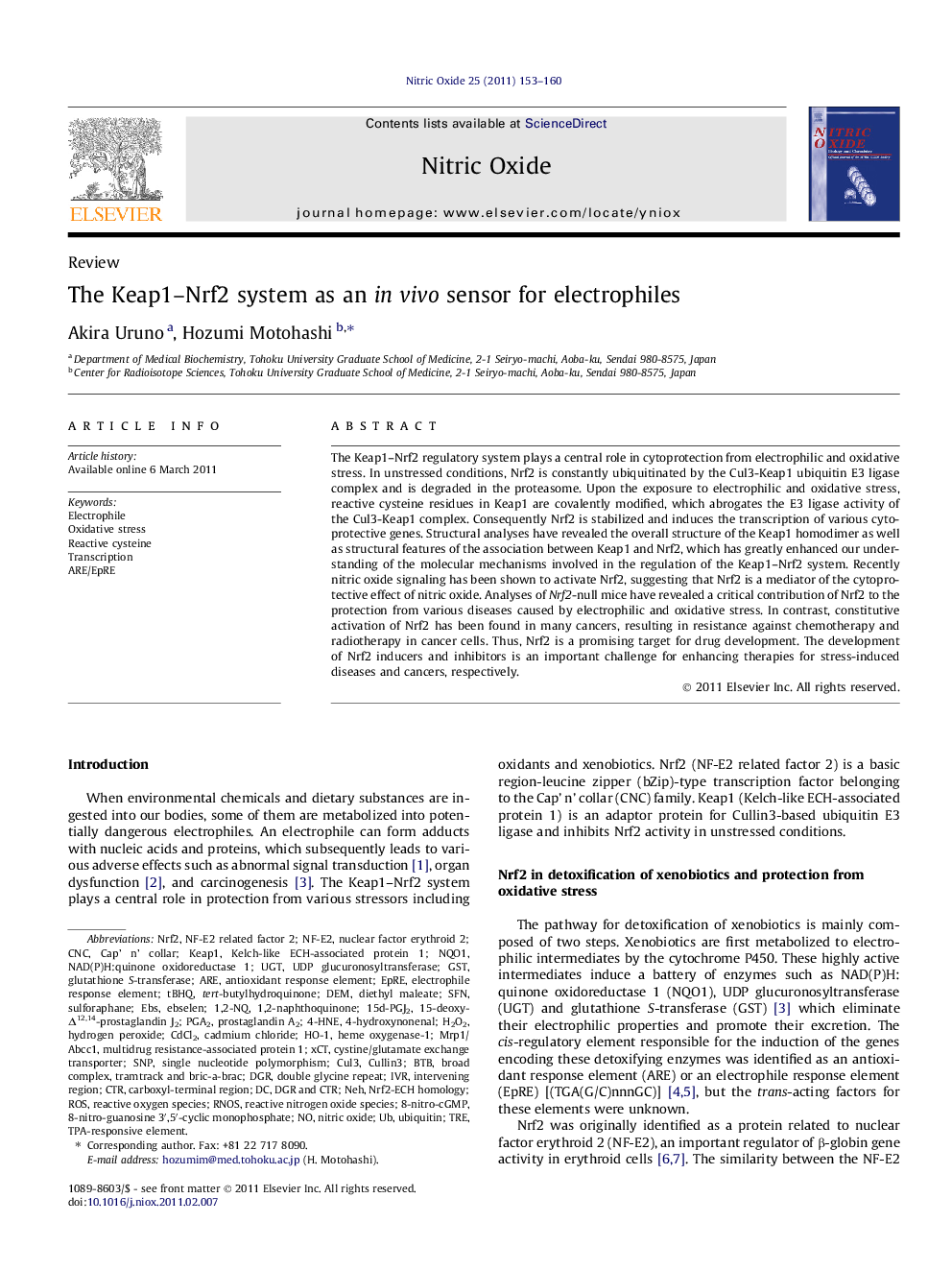| کد مقاله | کد نشریه | سال انتشار | مقاله انگلیسی | نسخه تمام متن |
|---|---|---|---|---|
| 2001612 | 1066049 | 2011 | 8 صفحه PDF | دانلود رایگان |

The Keap1–Nrf2 regulatory system plays a central role in cytoprotection from electrophilic and oxidative stress. In unstressed conditions, Nrf2 is constantly ubiquitinated by the Cul3-Keap1 ubiquitin E3 ligase complex and is degraded in the proteasome. Upon the exposure to electrophilic and oxidative stress, reactive cysteine residues in Keap1 are covalently modified, which abrogates the E3 ligase activity of the Cul3-Keap1 complex. Consequently Nrf2 is stabilized and induces the transcription of various cytoprotective genes. Structural analyses have revealed the overall structure of the Keap1 homodimer as well as structural features of the association between Keap1 and Nrf2, which has greatly enhanced our understanding of the molecular mechanisms involved in the regulation of the Keap1–Nrf2 system. Recently nitric oxide signaling has been shown to activate Nrf2, suggesting that Nrf2 is a mediator of the cytoprotective effect of nitric oxide. Analyses of Nrf2-null mice have revealed a critical contribution of Nrf2 to the protection from various diseases caused by electrophilic and oxidative stress. In contrast, constitutive activation of Nrf2 has been found in many cancers, resulting in resistance against chemotherapy and radiotherapy in cancer cells. Thus, Nrf2 is a promising target for drug development. The development of Nrf2 inducers and inhibitors is an important challenge for enhancing therapies for stress-induced diseases and cancers, respectively.
Journal: Nitric Oxide - Volume 25, Issue 2, 1 August 2011, Pages 153–160